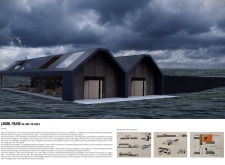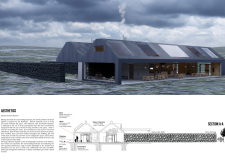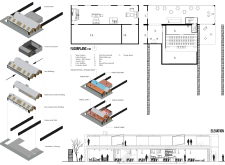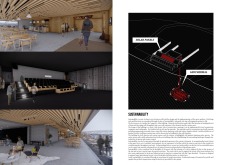5 key facts about this project
The movie pavilion located in Iceland serves as a cultural center, designed for both local residents and visitors interested in film. Positioned within a unique landscape, the pavilion enhances its surroundings while showcasing a modern architectural approach. The design focuses on simplicity and functionality, creating a welcoming environment that highlights Icelandic culture and craftsmanship.
Architectural Form
The shape of the pavilion mirrors traditional rural buildings found in Iceland, providing a sense of comfort and cultural relevance. This design choice invites the community to engage with the structure. It respects the rich heritage of the region while establishing a space that feels familiar to its users.
Material Selection
The materials used in the pavilion's construction are significant. Wood and stone are the primary components, chosen for their local availability and visual appeal. The use of warm wood introduces a sense of coziness inside the building, contrasting with the cool, rugged stone that reflects the harsh Icelandic landscape. This thoughtful selection not only enhances the aesthetics but also connects the pavilion more closely to its environment.
Spatial Layout
Inside, the pavilion offers a flexible layout that accommodates various activities, such as film screenings and community events. This adaptability allows the space to host everything from small gatherings to larger activities. The design promotes accessibility and encourages all community members to participate, making the pavilion an important cultural resource.
Environmental Integration
Sustainability is an important consideration in the design. The project emphasizes the use of local materials to reduce environmental impact. By doing so, the pavilion fosters a relationship with the natural surroundings. The architecture promotes responsible use of resources while maintaining a strong connection to the landscape.
The pavilion features large glass panels that frame views of the dramatic landscape, letting in natural light. This connection to the outside enhances the overall experience for visitors and reinforces the idea of unity between indoor and outdoor environments.





















































